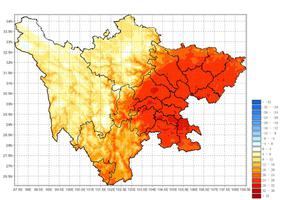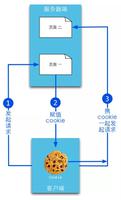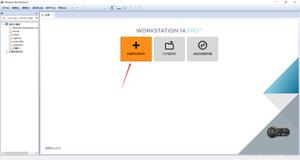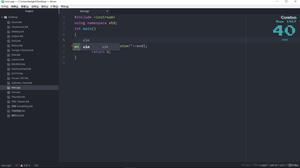Tensorflow 多线程设置方式
一. 通过 ConfigProto 设置多线程
(具体参数功能及描述见 tensorflow/core/protobuf/config.proto)
在进行 tf.ConfigProto() 初始化时,可以通过设置相应的参数,来控制每个操作符 op 并行计算的线程个数或 session 线程池的线程数。主要涉及的参数有以下三个:
1. intra_op_parallelism_threads 控制运算符op内部的并行
当运算符 op 为单一运算符,并且内部可以实现并行时,如矩阵乘法,reduce_sum 之类的操作,可以通过设置 intra_op_parallelism_threads 参数来并行。
2. inter_op_parallelism_threads 控制多个运算符op之间的并行计算
当有多个运算符 op,并且他们之间比较独立,运算符和运算符之间没有直接的路径 Path 相连。Tensorflow会尝试并行地计算他们,使用由 inter_op_parallelism_threads 参数来控制数量的一个线程池。
在第一次创建会话将设置将来所有会话的线程数,除非是配置了 session_inter_op_thread_pool 选项。
3. session_inter_op_thread_pool 配置会话线程池。
如果会话线程池的 num_threads 为 0,使用 inter_op_parallelism_threads 选项。
二. 通过队列进行数据读取时设置多线程
(具体函数功能及描述见 tensorflow/python/training/input.py)
1. 通过以下函数进行样本批处理时,可以通过设置 num_threads 来设置单个 Reader 多线程读取
1) batch(tensors, batch_size, num_threads=1, capacity=32,
enqueue_many=False, shapes=None, dynamic_pad=False,
allow_smaller_final_batch=False, shared_name=None, name=None)
2) maybe_batch(tensors, keep_input, batch_size, num_threads=1, capacity=32,
enqueue_many=False, shapes=None, dynamic_pad=False,
allow_smaller_final_batch=False, shared_name=None, name=None)
3) shuffle_batch(tensors, batch_size, capacity, min_after_dequeue,
num_threads=1, seed=None, enqueue_many=False, shapes=None,
allow_smaller_final_batch=False, shared_name=None, name=None)
4) maybe_shuffle_batch(tensors, batch_size, capacity, min_after_dequeue,
keep_input, num_threads=1, seed=None,
enqueue_many=False, shapes=None,
allow_smaller_final_batch=False, shared_name=None,
name=None)
例:
import tensorflow as tf
filenames = ['A.csv', 'B.csv', 'C.csv']
# 生成一个先入先出队列和一个 QueueRunner,生成文件名队列
filename_queue = tf.train.string_input_producer(filenames, shuffle=False)
# 定义 Reader 和 Decoder
reader = tf.TextLineReader()
key, value = reader.read(filename_queue)
example, label = tf.decode_csv(value, record_defaults=[['null'], ['null']])
# 使用tf.train.batch() 会为 graph 添加一个样本队列和一个 QueueRunner。
# 经过 Reader 读取文件和 Decoder 解码后数据会进入这个队列,再批量出队。
# tf.train.batch() 这里只有一个 Reader,可以设置多线程
example_batch, label_batch = tf.train.batch([example, label], batch_size=5)
with tf.Session() as sess:
coord = tf.train.Coordinator()
threads = tf.train.start_queue_runners(coord=coord)
for i in range(10):
e_val,l_val = sess.run([example_batch,label_batch])
print e_val,l_val
coord.request_stop()
coord.join(threads)
2. 通过以下函数进行样本批处理时,可以通过设置 Decoder 和 Reader 的个数来设置多 Reader 读取,其中每个 Reader 使用一个线程
1) batch_join(tensors_list, batch_size, capacity=32, enqueue_many=False,
shapes=None, dynamic_pad=False, allow_smaller_final_batch=False,
shared_name=None, name=None):
2) maybe_batch_join(tensors_list, keep_input, batch_size, capacity=32,
enqueue_many=False, shapes=None, dynamic_pad=False,
allow_smaller_final_batch=False, shared_name=None,
name=None)
3) shuffle_batch_join(tensors_list, batch_size, capacity,
min_after_dequeue, seed=None, enqueue_many=False,
shapes=None, allow_smaller_final_batch=False,
shared_name=None, name=None)
4) maybe_shuffle_batch_join(tensors_list, batch_size, capacity,
min_after_dequeue, keep_input, seed=None,
enqueue_many=False, shapes=None,
allow_smaller_final_batch=False, shared_name=None,
name=None)
例:
import tensorflow as tf
filenames = ['A.csv', 'B.csv', 'C.csv']
# 生成一个先入先出队列和一个 QueueRunner,生成文件名队列
filename_queue = tf.train.string_input_producer(filenames, shuffle=False)
# 定义 Reader
reader = tf.TextLineReader()
key, value = reader.read(filename_queue)
#定义了多个 Decoder, 每个 Decoder 跟一个 Reader 相连, 即有多个 Reader
example_list = [tf.decode_csv(value, record_defaults=[['null'], ['null']])
for _ in range(2)] # Decoder 和 Reader 为 2
# 使用tf.train.batch_join() 会为 graph 添加一个样本队列和一个 QueueRunner。
# 经过多个 Reader 读取文件和 Decoder 解码后数据会进入这个队列,再批量出队。
# 使用 tf.train.batch_join(), 可以使用多个 Reader 并行读取数据。每个 Reader 使用一个线程
example_batch, label_batch = tf.train.batch_join(example_list, batch_size=5)
with tf.Session() as sess:
coord = tf.train.Coordinator()
threads = tf.train.start_queue_runners(coord=coord)
for i in range(10):
e_val,l_val = sess.run([example_batch,label_batch])
print e_val,l_val
coord.request_stop()
coord.join(threads)
以上这篇Tensorflow 多线程设置方式就是小编分享给大家的全部内容了,希望能给大家一个参考,也希望大家多多支持。
以上是 Tensorflow 多线程设置方式 的全部内容, 来源链接: utcz.com/z/346130.html







